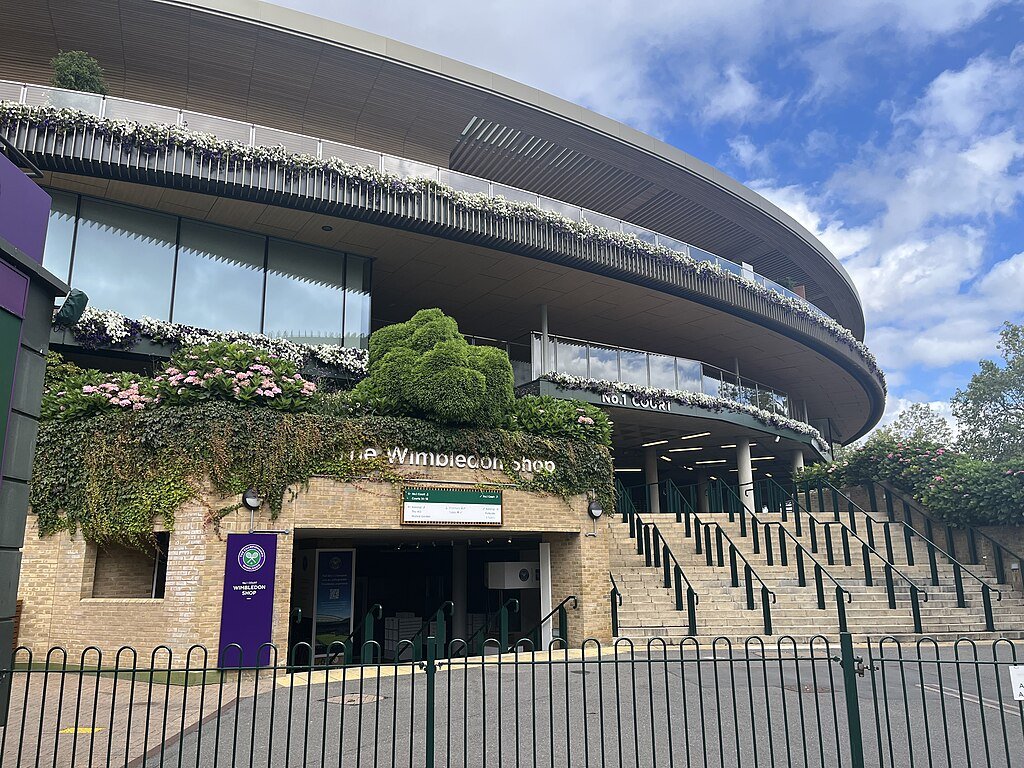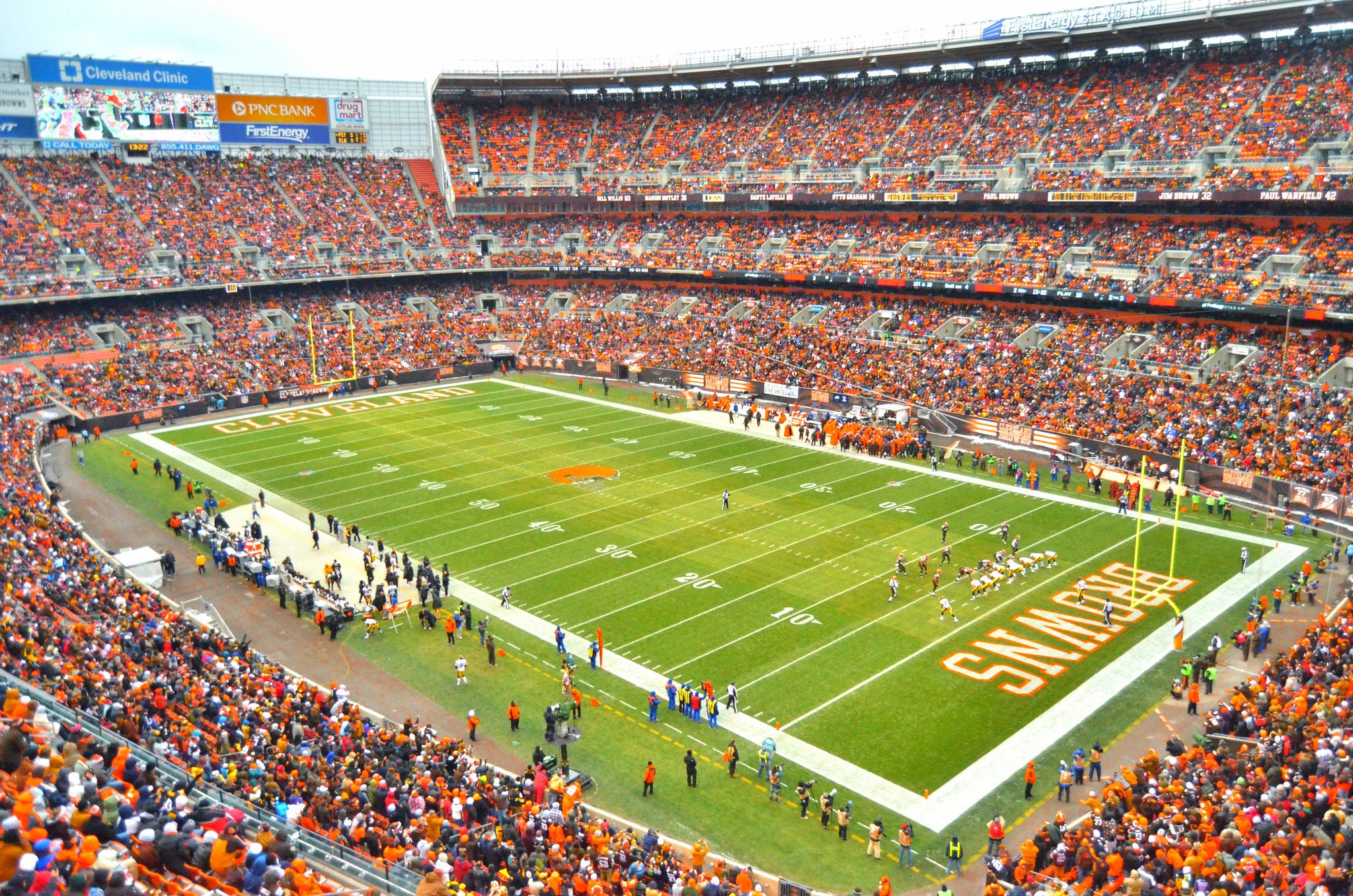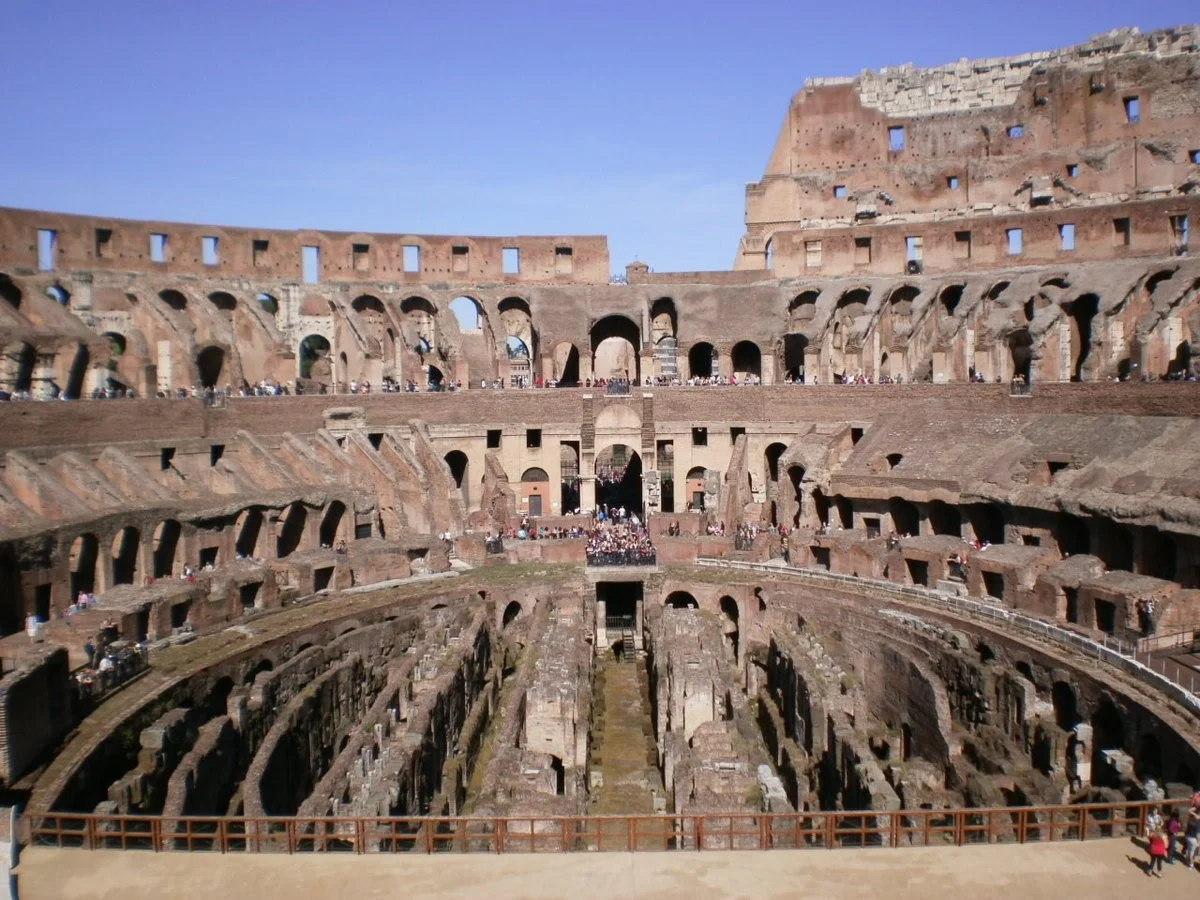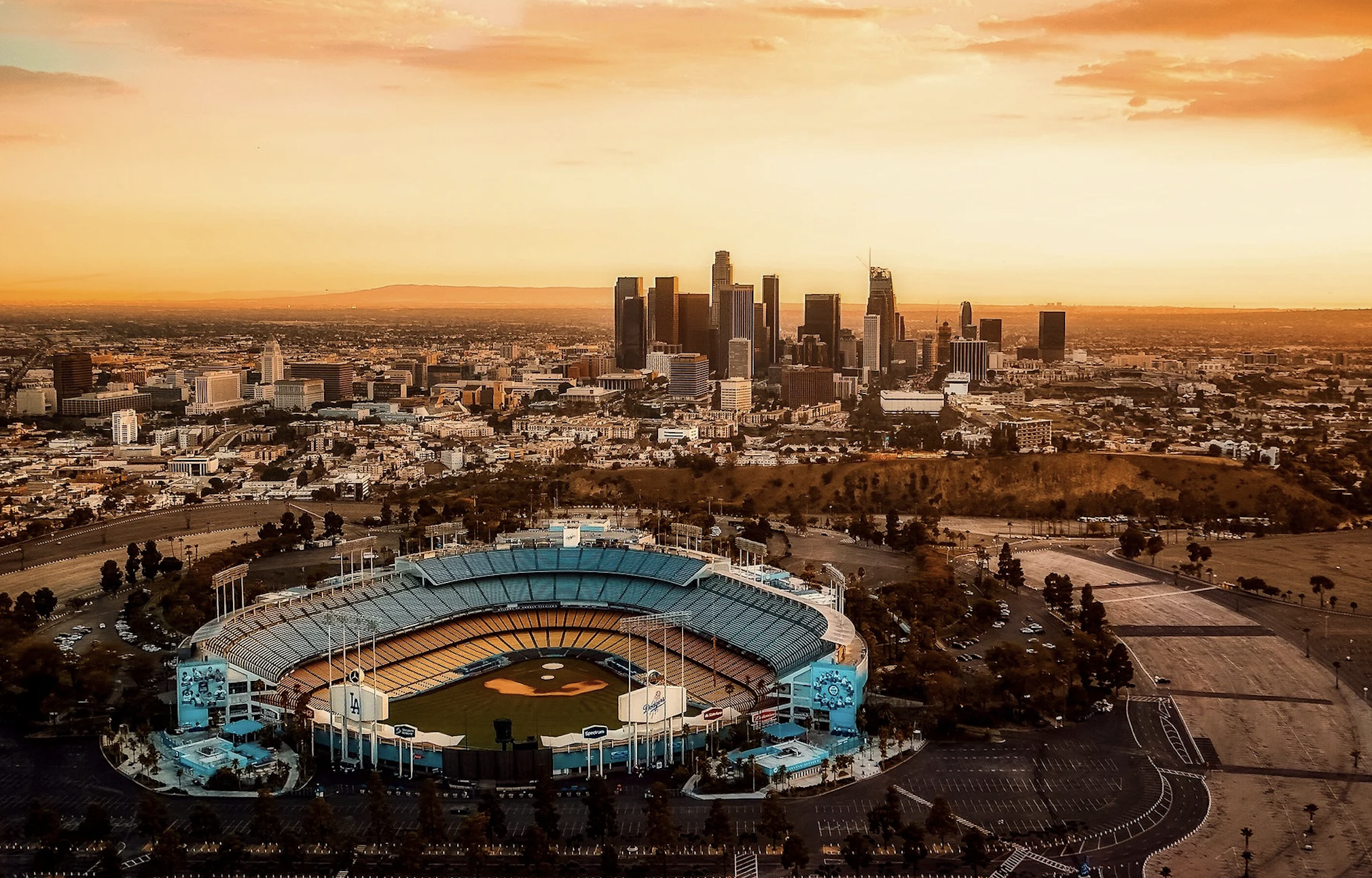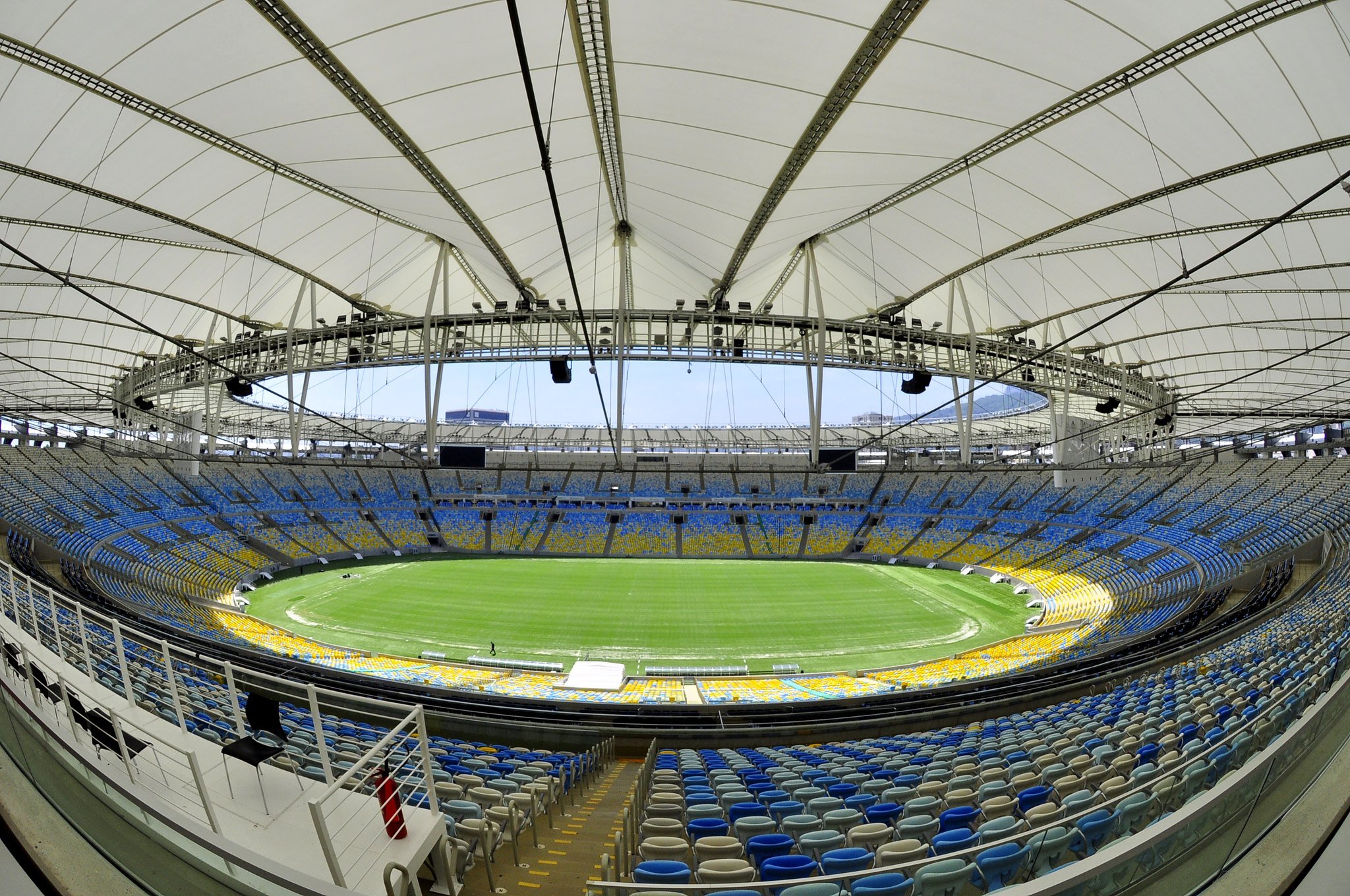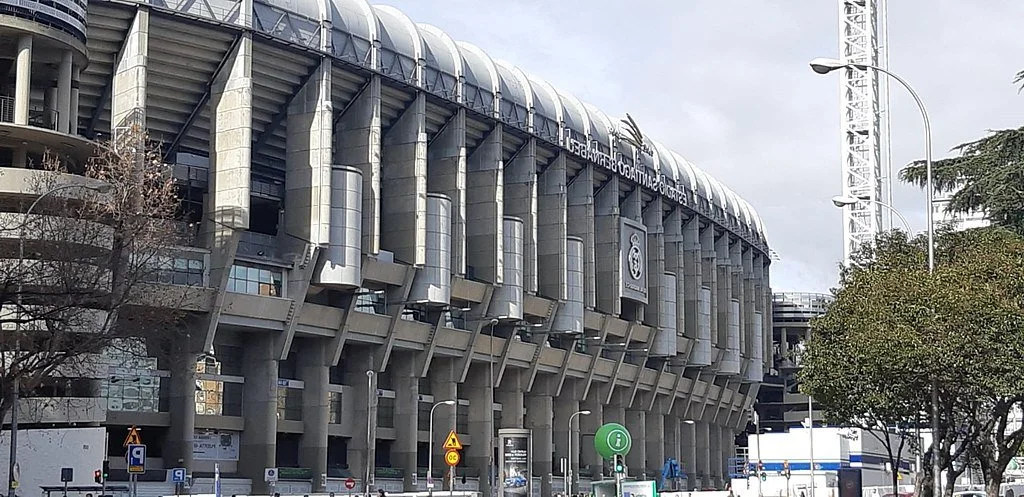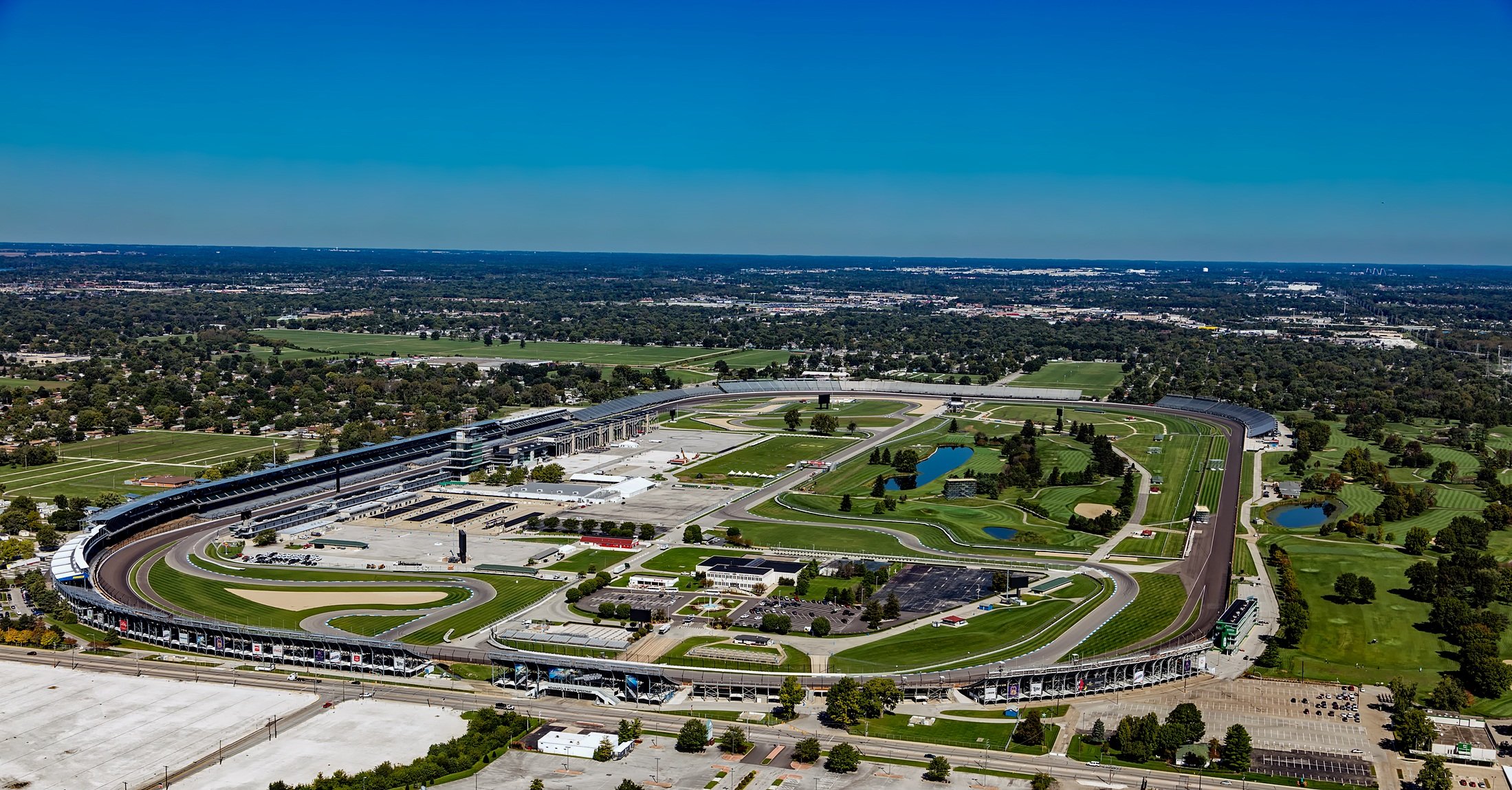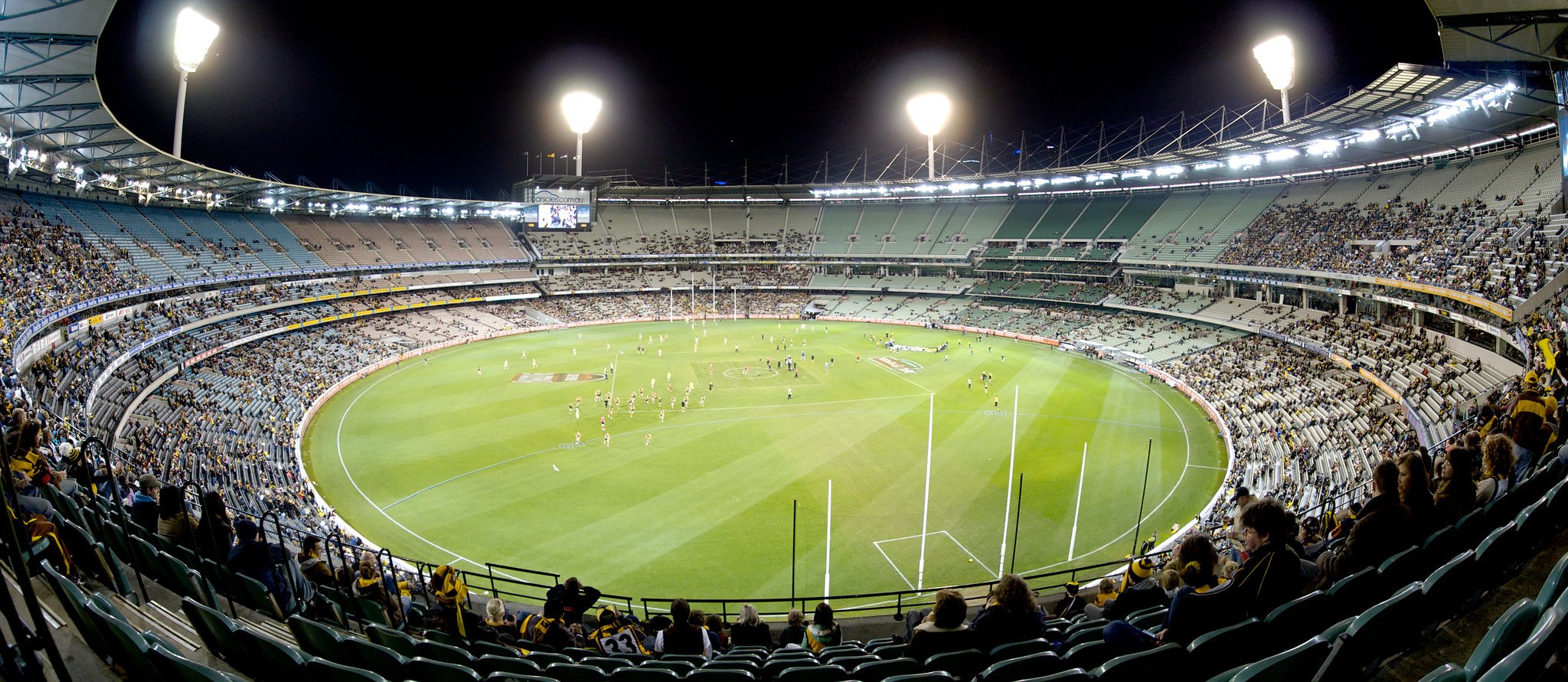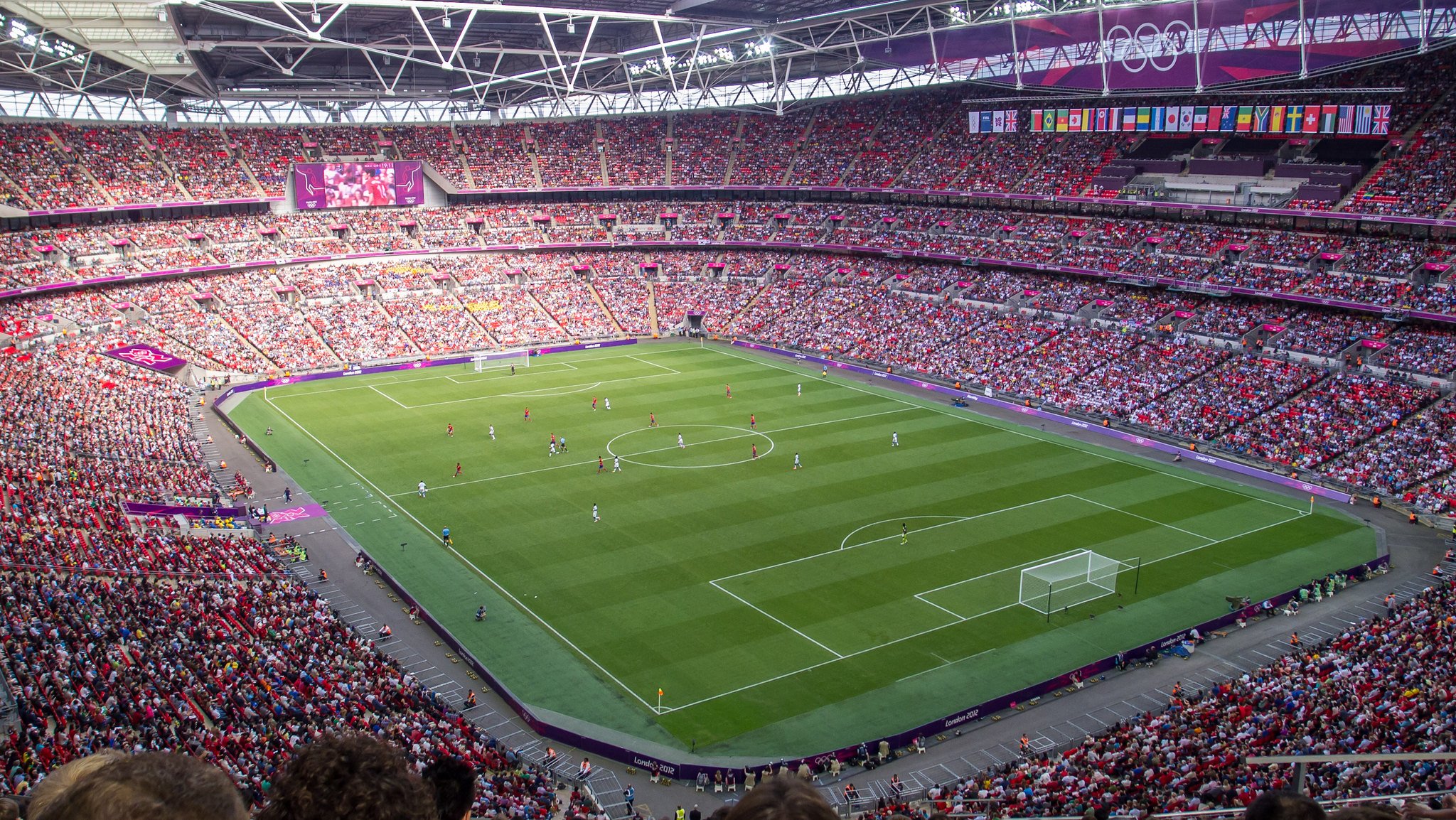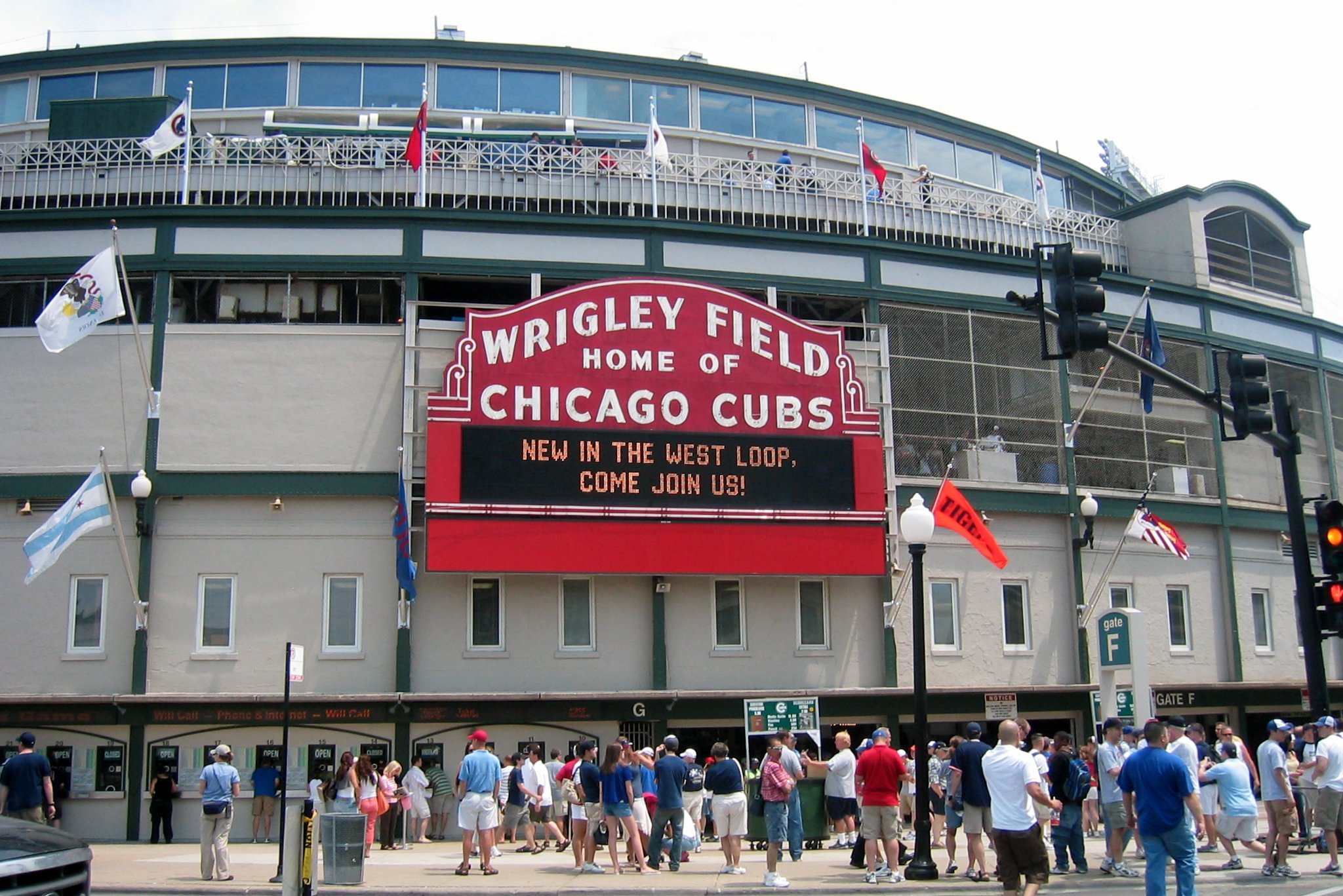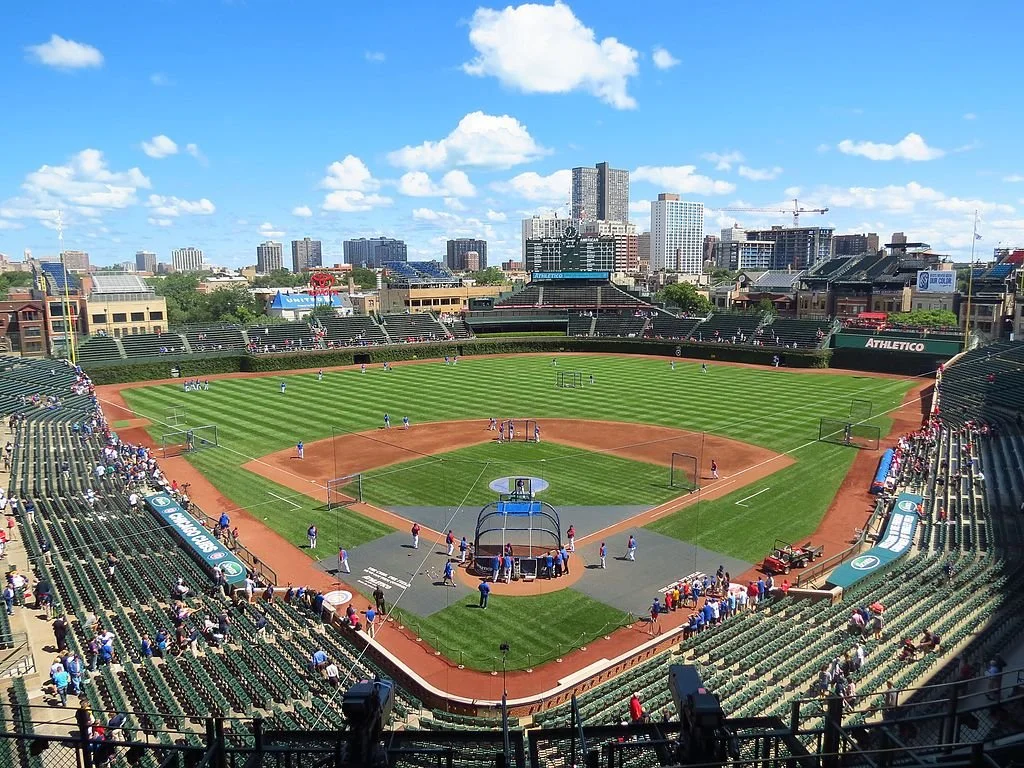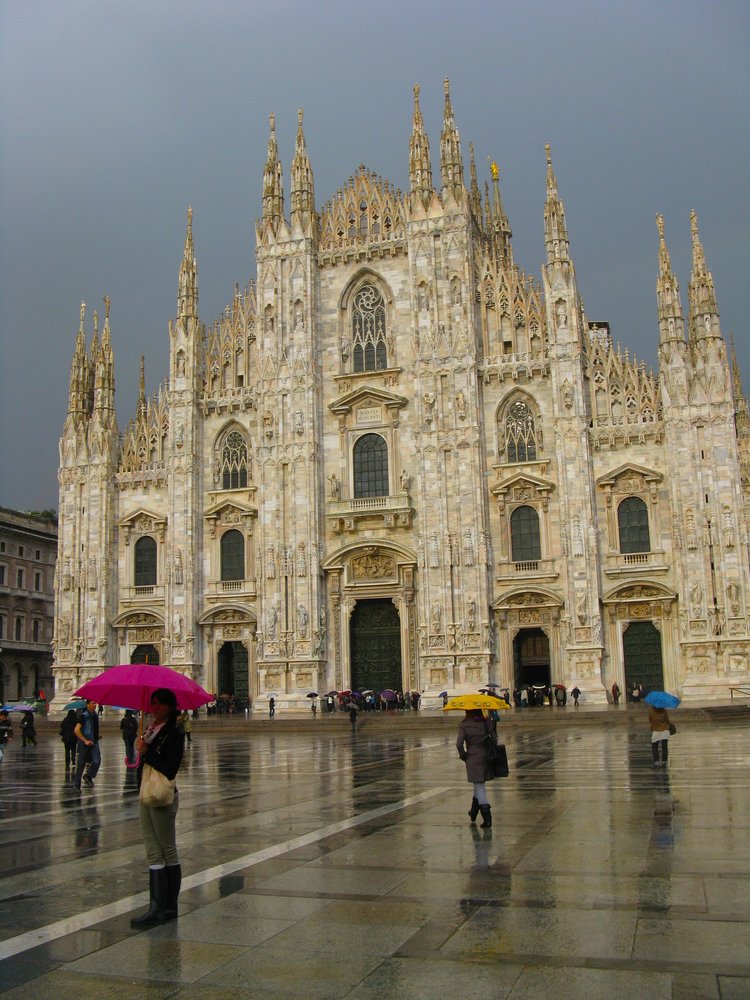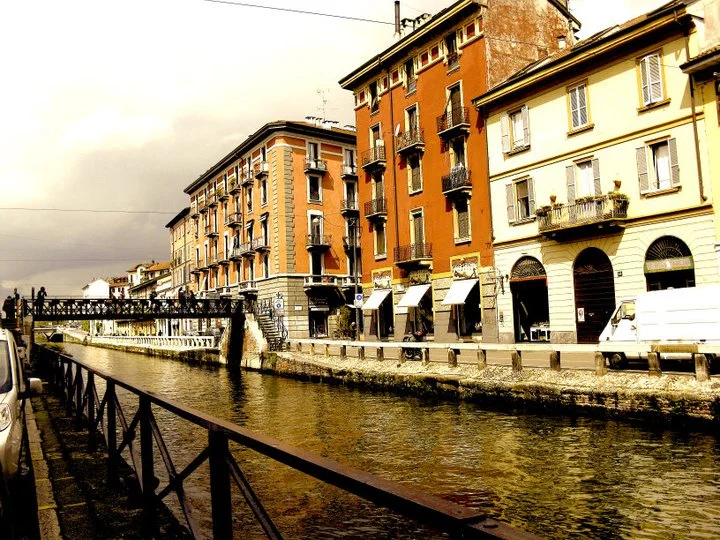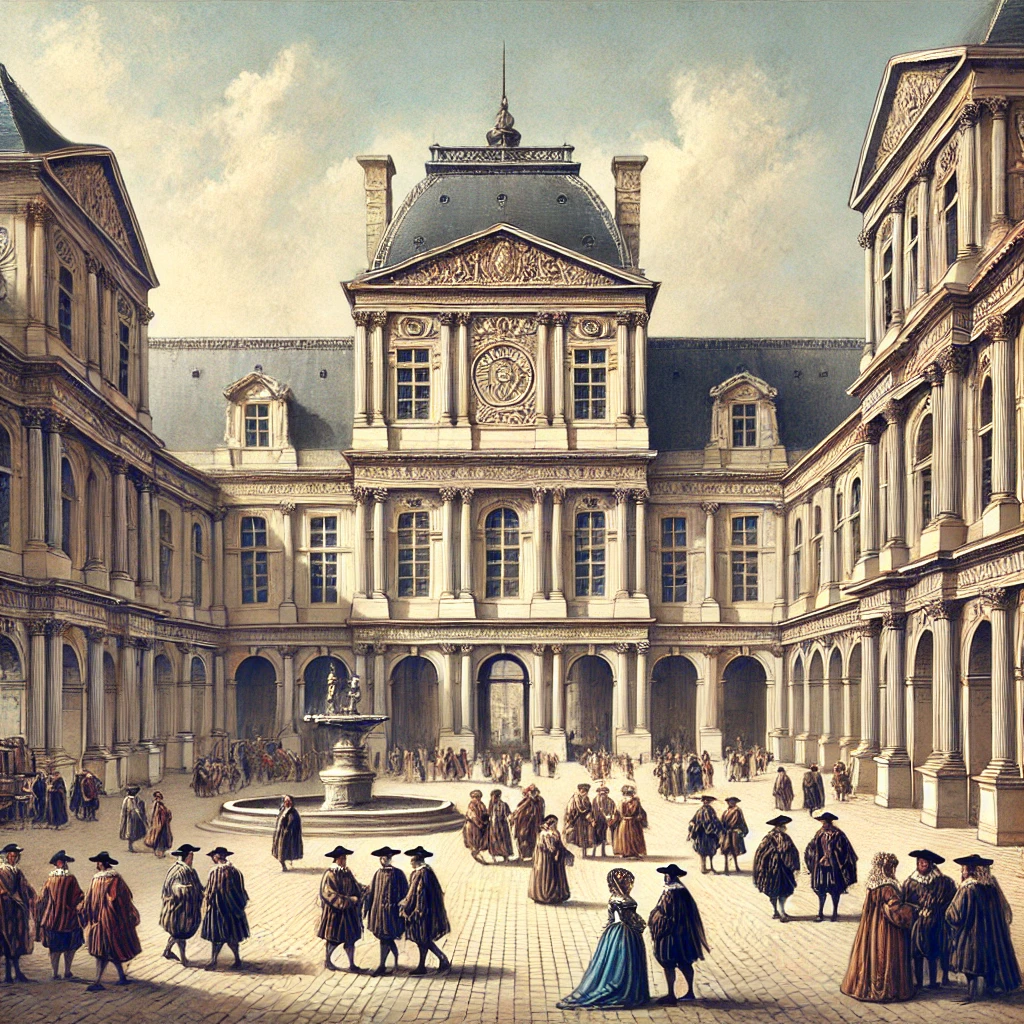From the Colosseum to Dodger Stadium, from Wembley to Yankee Stadium, we’ve got a winning itinerary of the planet’s most iconic sporting landmarks. Game on, sports fans!
Sports stadiums have been gathering spots for ages, where people have come to witness athletic feats, whether that’s a fight between gladiators in Ancient Rome or today’s games. From the deafening cheers to the hushed silences, these places have seen raw emotions on full display.
Now, get ready for a global journey for sports fans: We’ll be making stops at some of the world’s most iconic stadiums and sporting landmarks. From an ancient arena to modern architectural marvels, we’ll dig into their history and the architects who brought them to life, throw in some interesting facts, and even point out a few nearby attractions.
All England Lawn Tennis and Croquet Club
This London site has hosted Wimbledon since 1877. The world famous tournament is one of the big four in professional tennis, commonly known as the Grand Slams. And when tennis folk mention a “Grand Slam,” they mean winning all four major championships, held in Australia, France, the U.K. and the United States, in the same calendar season.
Architect: Stanley Peach
Fun fact: The retractable roof installed in 2009 ensures that play can continue even during the all-too-common English summer rain.
Nearby attractions: Visit the Victoria & Albert, an amazing museum of art and design, or grab your baking buddies and live your Great British Bake Off fantasy at the Big London Bake.
Cleveland Browns Stadium
For die-hard American football fans, this place is like sacred turf. When the players hit the field and the game intensifies, you’re in for all the highs and lows of a typical game. And if you’re looking to crank up the experience and try to win some money, hedge your bets with this deal.
Architect: Populous (formerly HOK Sport)
Fun fact: The stadium was designed to give spectators unobstructed views of the city skyline and Lake Erie.
Nearby attractions: Why not make a day of it? You can check out the Rock & Roll Hall of Fame or take a leisurely afternoon stroll through the Cleveland Botanical Garden.
The Colosseum
The ancient world had its own versions of sporting arenas, but let’s be honest — none could quite rival the grandeur and infamy of Rome’s magnificent Colosseum. This colossal wonder serves as a testament to the might of the Roman Empire, along with its insatiable appetite for entertainment. The arena’s innovative elliptical shape laid the foundation for modern stadiums.
Constructed under the Flavian dynasty between 72 and 81 CE, the massive amphitheater could seat over 50,000 spectators. In addition to hosting animal hunts and gladiatorial battles, the arena could be flooded with water, where battles between ships would take place — all to the roaring approval or dismay of the audience.
Architect: Commissioned by Emperor Vespasian and completed by his son Titus
Fun fact: Beneath the Colosseum’s floor was a vast subterranean substructure known as the hypogeum. This included a complex network of tunnels and chambers where gladiators, ferocious beasts and sinister contraptions for special effects were kept before fights.
Nearby attractions: You won’t have to go far at all to dive into Ancient Roman history. Just a stone's throw away, you’ve got the Roman Forum and Palatine Hill, waiting to transport you back in time.
Dodger Stadium
SoCal vibes meet America’s so-called favorite pastime at Dodger Stadium. Serving as home base for the Los Angeles Dodgers, it’s been an integral part of the MLB (Major Baseball League) scene since it opened in 1962. Built in the valley of Chavez Ravine and set against the backdrop of the San Gabriel Mountains, its scenic beauty complements the thrilling baseball action.
Architect: Emil Praeger
Fun fact: The concept for Dodger Stadium began to take shape in 1957, following the team’s relocation from Brooklyn, New York. Today, it holds the title as the oldest ballpark west of the Mississippi River and ranks as the third-oldest MLB ballpark, behind Boston’s Fenway Park and Chicago’s Wrigley Field.
Nearby attractions: Reach for the stars at Griffith Observatory or visit historic Olvera Street, where you’ll find the colorful Mexican Marketplace.
Estádio do Maracanã
Constructed to serve as the main venue for the 1950 World Cup, Rio de Janeiro’s Maracanã Stadium embodies Brazil’s unwavering passion for football (known to us Americans as soccer). This stadium has borne witness to some of the sport’s most historic moments, including the legendary Brazilian footballer Pelé scoring his 1,000th career goal here in 1969.
Architect: Rafael Galvão and Pedro Paulo B. Machado
Fun fact: The World Cup final held at Maracanã still holds the record for the highest attendance, with a crowd estimated at over 199,000.
Nearby attractions: Take the cog train to the top of Corcovado Mountain to reach the awe-inspiring Christ the Redeemer statue or visit the white sand beaches of Ipanema.
Estadio Santiago Bernabéu
Madrid’s Estadio Santiago Bernabéu stands as a monument to football royalty. It has hosted the final match of the UEFA Champions League on four occasions (1957, 1969, 1980 and 2010) and is the home of the Galácticos: the world’s priciest players signed to play for Real Madrid. From David Beckham to Alfredo Di Stéfano to Cristiano Ronaldo, this stadium has borne witness to legends and epic clashes.
Architect: Manuel Muñoz and Luis Alemany Soler, with a revamp by L35, Ribas & Riba, and GMP Architekten
Fun fact: The Bernabéu has an unusual vertical design, making it one of the steepest stadiums in the world, helping ensure that every fan has a great view.
Nearby attractions: For those seeking a cultural experience, Madrid beckons with its treasures, such as the Prado Museum and the Royal Palace.
Fenway Park
As home to the Boston Red Sox, Fenway Park proudly holds the title of being the oldest ballpark in Major League Baseball. It boasts a 37-foot-high (11 meters) left field wall affectionately known by locals as the Green Monster. (It was added a couple of years after opening to deter curious passersby from sneaking a glimpse.)
Architect: James McLaughlin
Fun fact: The lone red seat that sits among the green right field bleachers commemorates the longest home run in Fenway Park history, which was hit by Ted Williams on June 9, 1946. Legend holds that Williams spotted a fan taking a nap and decided to wake him up by launching a ball at him.
Nearby attractions: After the game’s over, you’ve got some great options for entertainment. You can explore Boston's historic Freedom Trail or head over to the lively Quincy Market.
Indianapolis Motor Speedway
Racing enthusiasts know that there’s no place quite like the Indianapolis Motor Speedway in Indiana. The thrill, the speed and the history — it’s all there. Traditionally, the race is held over the last weekend of May and stands as one of the oldest and largest single-day sporting events in the world.
Architect: Not attributed to a specific architect or firm
Fun fact: Originally, this race was called the 500-Mile Sweepstakes, but its name went through quite a few changes over time. The “500” stuck around, though. Drivers hit 500 miles by going 200 laps around the 2.5-mile oval.
Nearby attractions: The Indianapolis Motor Speedway Museum offers an in-depth exploration of racing history. You can also discover artworks along the 100-acre riverfront Virginia B. Fairbanks Art & Nature Park.
Madison Square Garden
New York City’s Madison Square Garden has been the stage for some of the 20th century’s greatest athletes, from boxing legend Muhammad Ali to hockey great Mark Messier. Nicknamed the World’s Most Famous Arena, the venue has witnessed a bit of everything — from Marilyn Monroe singing “Happy Birthday” to President John F. Kennedy at the 1962 Democratic Party fundraising dinner to the excitement of Knicks basketball and Rangers hockey games.
Architect: Stanford White, Cass Gilbert and Charles Luckman
Fun fact: Madison Square Garden has been rebuilt a total of four times since 1879. Its current iteration was designed by American architect Charles Luckman in 1968, whose firm also designed the Prudential Tower in Boston and the Forum in Inglewood, California.
Nearby attractions: Explore the High Line, a public park built on a historic elevated rail line and watch the sunset over Manhattan from the 86th floor of the Empire State Building.
Melbourne Cricket Ground
Over in Australia, you’ve got the Melbourne Cricket Ground, or MCG to locals. This place is like the crown jewel of Aussie sports venues, and it’s a big deal, as it’s the largest in the Southern Hemisphere. It was built to satisfy the continent’s cricket craze, and it was here that the world’s first test cricket match took place, in 1877. Test cricket is like the granddaddy of the sport, lasting a full five days, where two national teams take turns batting and bowling. It was a faceoff between Australia and England, and in the end, Australia came out on top, winning by 45 runs.
Architect: Various (the stadium has undergone multiple renovations)
Fun fact: The MCG’s six light towers are 75 meters high, equivalent to a 22-story building and are the tallest of any sporting venue in the world.
Nearby attractions: Take a leisurely stroll along the Yarra River or visit the National Sports Museum for a comprehensive exploration of Australia’s sports legacy.
San Siro Stadium
Italy’s San Siro is one of the most legendary venues for football (soccer). It’s officially named Stadio Giuseppe Meazza in memory of Milanese footballer Giuseppe Meazza and is home to both Inter and AC Milan, two top professional teams.
AC Milan was founded in 1899, and Inter Milan followed nine years later in 1908. Interestingly, Inter’s formation was a result of a disagreement within AC Milan’s ranks, particularly regarding the signing of foreign players. A fierce rivalry emerged, cranking up the already electrifying atmosphere of the annual Milan Derby, which, as you might have guessed, takes place at none other than San Siro.
Architect: Ulisse Stacchini and Alberto Cugini
Fun fact: In preparation for the 1990 World Cup, architects Giancarlo Ragazzi and Enrico Hoffer, along with engineer Leo Finzi, designed the addition of the stadium’s third tier, suspended by its 11 spring-like towers and crisscrossed red steel girders. These enhancements were aimed at boosting San Siro’s seating capacity.
Nearby attractions: The Castello Sforzesco and the gorgeous Gothic-style Milan Cathedral, known as the Duomo, (the third largest church in the world) are situated in the heart of the city.
SoFi Stadium
Home to the Los Angeles Rams and Chargers, this stadium sets the bar high with its innovative design and immersive state-of-the-art facilities. The 3.1-million-square-foot (288,000-square-meter) arena is the largest in the NFL.
Architect: HKS
Fun fact: The stadium features the Oculus, an oval, double-sided infinity screen suspended 122 feet (37 meters) above the playing field. This massive display includes a 4K HDR video board and 27,000 embedded LED pucks capable of displaying images and videos in such high resolution that you can spot them from airplanes arriving at Los Angeles International Airport.
Nearby attractions: Take in a concert at the Kia Forum or grab a donut at Randy’s. The original shop features a massive 32-foot-tall donut on its roof, and has appeared in movies like Wayne’s World and Iron Man.
Stade Roland-Garros
Paris is home to this mecca for clay court tennis. It’s the place where the French Open goes down every year. For two action-packed weeks, the best international players, including Björn Borg and Rafael Nadal, gather to battle it out on its challenging courts. And there are 17 of them, including the central Philippe-Chatrier court, which has a retractable roof to keep the game going when it rains.
Architect: Louis Faure-Dujarric
Fun fact: The stadium features an open-air courtyard dedicated to France’s Four Musketeers, or les Quatre Mousquetaires. It’s a nod to a quartet of iconic French players: Jean Borotra, Jacques Brugnon, Henri Cochet and René Lacoste, who made their country proud in the tennis scene during the 1920s and ’30s. Lacoste even got his nickname “the Crocodile,” thanks to his big grin and iron grip on his racket. And guess what? He later went on to create the clothing brand famous for that embroidered crocodile logo.
Nearby attractions: The enchanting Bois de Boulogne park is right next door, and the Eiffel Tower is a short distance away.
Wembley Stadium
Crossing over to the British Isles, Wembley Stadium in London is a pilgrimage site for football/soccer fans. The venue hosts major matches, including the home games of the England national football team and the Football Association Challenge Cup final as well as hosting concerts from bands like Green Day.
Sir Robert McAlpine laid the foundation for the original, which was constructed for the British Empire Exhibition of 1924 and was quite a marvel, being the largest reinforced concrete building of its time. Its famous twin towers were symbols of the game and served as the backdrop for some of the most epic moments in football for over 75 years.
The new Wembley, designed nearly 16 years ago by Foster + Partners, is twice the size of the old one and comes with modern upgrades like a retractable roof for those unpredictable weather days and a soaring arch that’s taken over as the iconic replacement for the twin towers.
Architect: Robert McAlpine, then Norman Foster
Fun fact: The Wembley Arch soars to a staggering height of 133 meters, equivalent to about 30 stories, and stretches 315 meters (over 1,000 feet), solidifying its status as the world’s longest single-span roof structure. It’s functional too, though: It bears the majority of the roof’s weight.
Nearby attractions: Located adjacent to the stadium, the London Designer Outlet (LDO) is a great place to get your shopping fix. Or you can spend a fun afternoon at the landmark Natural History Museum. They’ve got hands-on exhibits and even animatronic dinosaurs!
Wrigley Field
If you breeze into Chicago, aka the Windy City, you’ve got to stop by Wrigley Field, America’s second-oldest Major League ballpark. If we’re talking about a stadium that can rival Boston’s Green Monster, Wrigley’s ivy-covered outfield wall is a strong contender. It’s so iconic, it’s got its own set of rules: If a baseball disappears into its vines, the batter (and all runners) are granted two bases. However, to make it official, an outfielder must raise his hand to signal that the ball is lost in the ivy. If he doesn’t, it’s considered fair play.
Architect: Zachary Taylor Davis
Fun fact: The neighborhood stadium was one of the last Major League ballparks to install lights for night games, which didn’t happen until 1988. The tale of these floodlights dates back to the early 1940s, when plans were set in motion, but a pivotal twist occurred after the attack on Pearl Harbor. In a patriotic gesture, Philip K. Wrigley, owner of the Cubs, diverted 165 tons of steel to support the war effort instead of installing the lights.
Nearby attractions: After the game, you can wander the lively Wrigleyville neighborhood. And if you’re up for more adventure, don’t miss the chance to explore the city’s legendary architecture by taking a boat tour along the Chicago River.
Yankee Stadium
The original Yankee Stadium was a massive horseshoe-shaped ballpark and one of the most beloved structures in the history of baseball. Its field witnessed legendary players like Babe Ruth, Lou Gehrig, Joe DiMaggio and Mickey Mantle rounding its bases, to name just a few.
In 2009, the torch was passed to the new Yankee Stadium. Inspired by the 1923 Bronx Stadium, the modern four-story limestone and granite-faced ballpark even re-created the arched Art Deco metal frieze that crowned the upper deck of its illustrious predecessor.
Architect: Populous (formerly HOK Sport)
Fun fact: The Yankees’ impressive HD display is about 103 feet (30 meters) wide and 58 feet (18 meters) tall — six times larger than the screen at the old stadium.
Nearby attractions: Check out the Bronx Museum of the Arts and explore the impressive Victorian-era greenhouses of the New York Botanical Garden.
These stadiums and sporting venues are more than just places to watch a game — they are monuments to athletic achievement and the human spirit. Within their walls and on their fields, records have been broken, underdogs have triumphed, and fans have bonded over the shared passions of competition and community. Though styles and designs may change with the times, the thrill of cheering for the home team endures. The legends, memories and traditions attached to these landmarks will continue to inspire athletes and fans for generations to come. Wherever you are in the world, paying a visit to one of these iconic sporting meccas is a must for any true sports lover. –Taylor Miller

